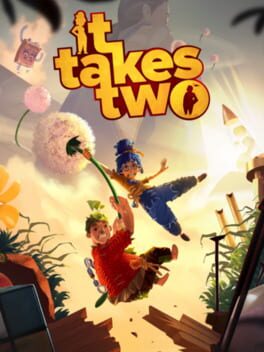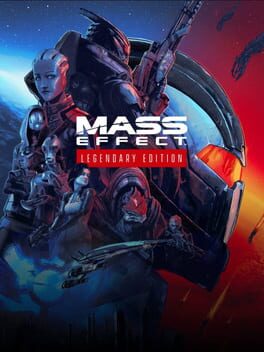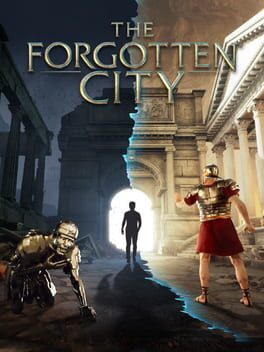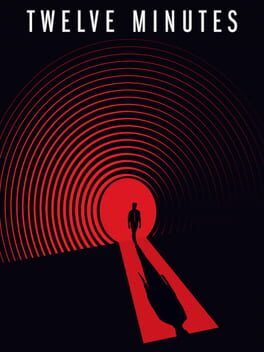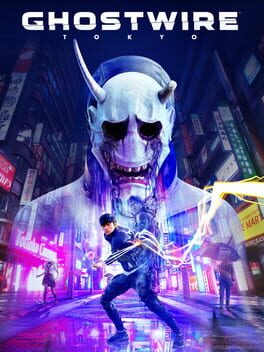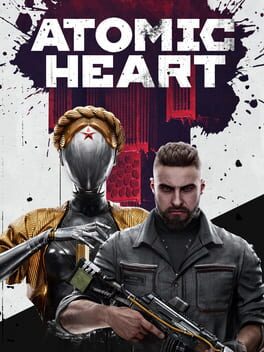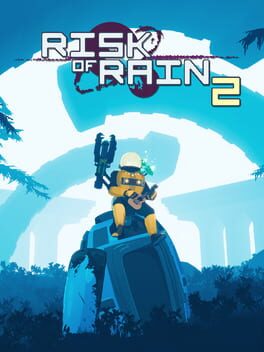tgrfawcett
2018
Hades is the rare roguelike experience that I am actually really into. The gameplay is well layered, story well told, and its aesthetic style to spare. Even so, it still is one of the many titles with a difficulty curve that made the whole game more frustrating than I usually care for. For quite some time I had dropped the title, sure I would never finish it, but sometime after it had gone off Game Pass, I picked up a copy. Thirty runs later I finally beat Hades. Although the story doesn’t end there, it was a milestone that felt earned. Almost as soon as I had finished that first successful run I was itching to go again and see more of it. After all, if I can finish it once surely, I could do the whole ten to see the real ending. Surely.
I honestly have no clue what worked so well with that finishing run. The game is absolutely bursting with variety, and I would be surprised if a player could ever replicate a run’s boons, buffs, and rewards. I imagine it would be difficult to even hear the same character dialogue again in a single playthrough. Although, that is not to say that the core experience is entirely new each run. It can get tiresome fighting the same enemies, in the same scenarios, over and over again. It is exhausting fighting the same boss battles thirty times over. Even so, the game does a great job of communicating growth to help pave over fatigue with an interest in seeing that next thing. Whether it be with resources, skills, weapon buffs, trinkets, or just in the character relationships. Each time you return to the House of Hades you are well aware that the last run is just another chapter in a long story.
I honestly have no clue what worked so well with that finishing run. The game is absolutely bursting with variety, and I would be surprised if a player could ever replicate a run’s boons, buffs, and rewards. I imagine it would be difficult to even hear the same character dialogue again in a single playthrough. Although, that is not to say that the core experience is entirely new each run. It can get tiresome fighting the same enemies, in the same scenarios, over and over again. It is exhausting fighting the same boss battles thirty times over. Even so, the game does a great job of communicating growth to help pave over fatigue with an interest in seeing that next thing. Whether it be with resources, skills, weapon buffs, trinkets, or just in the character relationships. Each time you return to the House of Hades you are well aware that the last run is just another chapter in a long story.
2021
This review contains spoilers
I am endlessly impressed by what Hazelight was able to do here. A game that changes its form every couple of hours is a game development miracle. The resource investment to make a five minute Street Fighter segment where you square off against the general of the squirrel army on the top of a plane made of underwear is unimaginable, but the game has a dozen or more moments like that. It is a real damn achievement in game design that Hazelight was able to pull this all together into a coherent final product. This all said, It Takes Two just didn’t connect with me like it did for so many others.
It is just a matter of pacing. The game feels much longer than it actually is. Just when you think you are finally about to turn a corner, Dr. Hakim shows up to throw a wrench in the gears. Each time you are really getting a handle on the new mechanic--it’s been taken to be replaced by the next thing. Still at the same time each area feels stretched to its absolute limits. Rose’s Room alone is a multi-part slog that sees you start in a pillow fort, go to “outer-space”, fight moon baboon, go through a lengthy platforming section, fix a train station, solve a dinosaur puzzle, become pirates, fight a giant octopus, put on a circus performance, explore a magic kingdom, dungeon crawl, beat chess, win at the claw machine, and then brutally murder Queen Cutie III as she begs for her life. It is excessive and by the time you have finished this chapter you have more than half the game left to play.
Solely cooperative experiences like this are a rarity, and this stands as one of the better games in that very small market. It is a really fantastic game, but it is the definition of too much of a good thing. I can’t recall how many unique locations, boss fights, abilities, or characters there were by the end of the game, but it was in the end still a good time. By pitting two opposing forces together and making them figure their shit out it gets played hooked and keeps them going. So, in spite of the pacing issues over the course of the fourteen or so hours it took to roll credits it was (mostly) a good time.
It is just a matter of pacing. The game feels much longer than it actually is. Just when you think you are finally about to turn a corner, Dr. Hakim shows up to throw a wrench in the gears. Each time you are really getting a handle on the new mechanic--it’s been taken to be replaced by the next thing. Still at the same time each area feels stretched to its absolute limits. Rose’s Room alone is a multi-part slog that sees you start in a pillow fort, go to “outer-space”, fight moon baboon, go through a lengthy platforming section, fix a train station, solve a dinosaur puzzle, become pirates, fight a giant octopus, put on a circus performance, explore a magic kingdom, dungeon crawl, beat chess, win at the claw machine, and then brutally murder Queen Cutie III as she begs for her life. It is excessive and by the time you have finished this chapter you have more than half the game left to play.
Solely cooperative experiences like this are a rarity, and this stands as one of the better games in that very small market. It is a really fantastic game, but it is the definition of too much of a good thing. I can’t recall how many unique locations, boss fights, abilities, or characters there were by the end of the game, but it was in the end still a good time. By pitting two opposing forces together and making them figure their shit out it gets played hooked and keeps them going. So, in spite of the pacing issues over the course of the fourteen or so hours it took to roll credits it was (mostly) a good time.
There is nothing I can say now about this trilogy I haven’t said about the games as separate works. They are all excellent. Although normally these lists are just everything released in the year, to place this series would practically be cheating. These games are some of the best ever made. They establish and build a universe brimming with potential so wonderfully. Together they tell the story of a ragtag starship crew who grow together as a family fighting genocidal squid robots and I couldn’t ask them to be anything more than that. Sure, they are starting to show their age, even with the glow up, but they are wonderful and the universe they have built is one I will always want to revisit. There is no better time to play or replay this trilogy than now.
Mario Party, in nearly any iteration, is just a lot of fun. Superstars is no exception, but there is one glaring issue–there isn’t nearly enough of it. There are just five boards and a hundred minigames with limits on how much you can alter in terms of game rules. Nintendo, you have a good thing, give me more of it. Most of the content here is envisioning older maps which should cut out the early stages of design work. These games sell gangbusters, just take a sliver of the profits and pump them into making these games bigger. Port the boards from Super, make more, I don’t have a strong feeling on what boards just more of them. It is a lot of fun but at some point you get tired of running circles on Peach’s Birthday Cake.
2021
This review contains spoilers
The Forgotten City is a game of great narrative choices limited by outdated game design. As a mod for Bethesda’s Skyrim, it was defined wholly by existing mechanics that do not really suit the kind of game Modern Storyteller is trying to make here. The archery is hackneyed and the conversation system inorganic. Bethesda designed these systems to suit a very specific experience, one that feels uncanny in Bethesda games and certainly feels worse in replica.
The time loop itself brings players an opportunity to unravel a broad puzzle box. In learning the characters’ stories and influencing the events so that they might finally free all of these people who are trapped under the oppression of “The Golden Rule” players are given an immense amount of freedom. Mistakes are unpunished as the time loop will bring you back again to try once more. Slowly saving people, preventing catastrophe, and learning new important details drove the game forward at a brisk pace that these games can sorely lack. By the time the final revelations were coming about the game had hardly worn out its welcome, even if those revelations were largely nonsensical. I appreciate the attention to history, but the game just didn’t have the resources to bring the evil space god justice. Regardless, the somewhat corny ending where the characters you have come to know are found to be living well in the modern era is endearing and definitely recalls a fonder era of adventure games where everything just kind of worked out in the end.
The time loop itself brings players an opportunity to unravel a broad puzzle box. In learning the characters’ stories and influencing the events so that they might finally free all of these people who are trapped under the oppression of “The Golden Rule” players are given an immense amount of freedom. Mistakes are unpunished as the time loop will bring you back again to try once more. Slowly saving people, preventing catastrophe, and learning new important details drove the game forward at a brisk pace that these games can sorely lack. By the time the final revelations were coming about the game had hardly worn out its welcome, even if those revelations were largely nonsensical. I appreciate the attention to history, but the game just didn’t have the resources to bring the evil space god justice. Regardless, the somewhat corny ending where the characters you have come to know are found to be living well in the modern era is endearing and definitely recalls a fonder era of adventure games where everything just kind of worked out in the end.
2021
In trying to capitalize on the twelve years of longing for a new Left 4 Dead, Turtle Rock Studios have produced a game with all the trappings, but none of magic. Back 4 Blood just doesn’t feel like you’d want it too, live service schlock aside, the campaign structure and bland design leave much to be desired. Having most of the enemies have no distinct visual design, sound cues, or even unique mechanics makes all of them uniformly bland grey monsters that must be dealt with uniformly. The sound design, in particular, signals how Back 4 Blood falls short. Lacking the punch of the music and sound cues of Left 4 Dead, each level ends with a whimper rather than hitting the player with a riff (https://www.youtube.com/watch?v=l6yocVX_RU8) that celebrates their survival. Still, after all these years it is hard not to at least venture into this title with some sense of nostalgia for the thing it is imitating. The card system is novel and can offer some really wonderful variety in the levels themselves but does fall short through continued play. The gunplay is suitable, although the difficulty curve is nonsensical. There is some fun to be had here, although your mileage may vary if you are still going back to Left 4 Dead 2 even after all these years.
2021
This review contains spoilers
I am compelled to write about this game, but I have nothing good to say. The game’s central twist–that its protagonist has amnesia and is married to his own sister–was so abysmal even the game could not go on–crashing the game and my brain. For weeks afterwards this game lived rent free in my head as I pondered what in the world its author was thinking. Like a moth to a flame, I compelled myself to push on and witness the true ending which further elaborates that the entire game’s narrative was, in fact, hypnosis. Willem Dafoe hypnotized you into not wanting to have sex with your sister. Excellent work Mr. Dafoe. Lacking a deft hand in its delivery, the game fails to bring the player into its story. Instead, the player must repeat through the same instances of dull conversation through to the multiple instances of domestic violence to obtain the most basic information for puzzle solving. The time looping mechanics are never used in any novel way, simply guiding the player through cycles, fast-forwarding through the same conversations, just to gain one line of dialogue you can use the next time as a gotcha to obtain the next line of dialogue. It is a dull waste of its talent, style, mechanics, and moreover the time it takes to uncover the shockingly bad narrative twists and turns.
2022
Ghostwire: Tokyo feels like a game without direction. While the reasons for this are not public one might take a few guesses at the departure of game director Ikumi Nakamura and the Bethesda acquisition as playing some part. From start to finish Ghostwire spins its wheels on a broad ghost fighting concept that never truly comes together.
Ghostwire just seems brimming with questionable choices when there might be a better product buried in here had other choice been made. Chief among these choices is the open world design. An open world design demands content with a capital C. Ghostwire has content, but is most of it worth a damn? Not really no. Time and time again it degrades at the “spooky” elements of the game with the same enemies in the same environments that you have seen a few dozen times over. The action focus makes these enemies trivial after the first few battles and tedious a while after that. A shame considering some of these enemy designs are genuinely off putting, but hardly scary when fought at distance in the open streets. The game always at its strongest in the constrained sections where the art design shines, and the freedom of the open world is ripped away.
The streets of Shibuya are empty, the most you will ever see of its residents blue floating spirits. This could elevate the scare factor, being alone with no one to turn to, but in practice it clears the world of tension. We are to be Tokyo’s savior and yet at no point in the game’s entire story do we interact with a living resident of Tokyo. Instead, you get to complete meaningless fetch quests or stumble across rooftops and alleyways to suck up their spirits into katashiro. With 240,000+ spirits to collect you would spend more time with them than playing the main story three times over. For as well realized as Shibuya is, there isn’t anything compelling you to explore these streets any further than you must.
The moment-to-moment gameplay is novel enough to support itself. The magic system is interesting, and each element is independent enough to offer some good moments of fighting to set it apart from most first-person action games that centralize on guns and swords. The core extraction feature, in particular, is simple, engaging, and feels satisfying to pull off. Ghostwire builds a small, if incredibly simple, combat system that feels good which is something to its benefit for certain.
Character upgrades in particular feel half baked. Again, as if to fulfill a mark on a game design doc the game has a few sets of skill trees that unlock little more than carrying capacity and speed boosts. If the skill is to be a smidge faster in charging an attack, that skill is ineffective at altering how you will continue playing the game. Skills in any game should offer a balance between opening new ways to play and creating synergies between the abilities you have. Ghostwire is far from the only game to fall short in this regard, but again it further disincentivizes any exploration or player growth. When the game marks its own minigames with a “Hold X to Auto-Complete” you just get a sense of doubt about the fundamental design of the game systems.
In practice most will likely find themselves following the straight lines (opened by clearing fog of the Tori gates) from story mission to story mission until their time with Ghostwire is at its end. If anything, the game demands you do nothing but. Often when you send off spirits while collecting your sister will psychically reach out in pain and beg you for aid.
The whole narrative thread is that your sister Mari is the lynchpin in the villainous Hannya’s strategy. As an aside, that isn’t his name, just the name of the mask he wears. You never learn anything meaningful about him as a person (the game even teases an unmasking that could never amount to anything which is baffling as they reveal KK’s body as one of the other masked henchmen). One more aside, this game has some of the worst lip-sync I have seen in a AAA game in some time and I don’t understand it.
For most of the narrative you are chasing after this one man with a vague sense of an evil master plan. It’s hardly the most compelling hook. Still, the game offers a nice relationship between protagonist Akito and the spirit KK. They have a very typical buddy-cop partnership. Beginning at odds they begrudgingly find common ground and leave one another by the credits rolls as friends. They have good banter and keep the game lively—in spite of its emptiness. Their relationship is the singular saving grace of this game’s narrative. It works and that is enough to support its short length.
Ghostwire: Tokyo is a contradiction of a game. In theory a spooky successor to Tango’s Evil Within it falls well short of the horror mold. It offers a big open world and different magic systems for a game with more action than anything else. Shibuya is a well realized and lovingly built world but lacking any life within. KK and Akito make a good pairing but have little to bounce off of. It is always a damn shame when a game shows promise but falls short of it. Especially when you get the sense that this is the only visit to this world and its concepts. Although a game with a good core, it is a core put into a game structure that works against it.
Ghostwire just seems brimming with questionable choices when there might be a better product buried in here had other choice been made. Chief among these choices is the open world design. An open world design demands content with a capital C. Ghostwire has content, but is most of it worth a damn? Not really no. Time and time again it degrades at the “spooky” elements of the game with the same enemies in the same environments that you have seen a few dozen times over. The action focus makes these enemies trivial after the first few battles and tedious a while after that. A shame considering some of these enemy designs are genuinely off putting, but hardly scary when fought at distance in the open streets. The game always at its strongest in the constrained sections where the art design shines, and the freedom of the open world is ripped away.
The streets of Shibuya are empty, the most you will ever see of its residents blue floating spirits. This could elevate the scare factor, being alone with no one to turn to, but in practice it clears the world of tension. We are to be Tokyo’s savior and yet at no point in the game’s entire story do we interact with a living resident of Tokyo. Instead, you get to complete meaningless fetch quests or stumble across rooftops and alleyways to suck up their spirits into katashiro. With 240,000+ spirits to collect you would spend more time with them than playing the main story three times over. For as well realized as Shibuya is, there isn’t anything compelling you to explore these streets any further than you must.
The moment-to-moment gameplay is novel enough to support itself. The magic system is interesting, and each element is independent enough to offer some good moments of fighting to set it apart from most first-person action games that centralize on guns and swords. The core extraction feature, in particular, is simple, engaging, and feels satisfying to pull off. Ghostwire builds a small, if incredibly simple, combat system that feels good which is something to its benefit for certain.
Character upgrades in particular feel half baked. Again, as if to fulfill a mark on a game design doc the game has a few sets of skill trees that unlock little more than carrying capacity and speed boosts. If the skill is to be a smidge faster in charging an attack, that skill is ineffective at altering how you will continue playing the game. Skills in any game should offer a balance between opening new ways to play and creating synergies between the abilities you have. Ghostwire is far from the only game to fall short in this regard, but again it further disincentivizes any exploration or player growth. When the game marks its own minigames with a “Hold X to Auto-Complete” you just get a sense of doubt about the fundamental design of the game systems.
In practice most will likely find themselves following the straight lines (opened by clearing fog of the Tori gates) from story mission to story mission until their time with Ghostwire is at its end. If anything, the game demands you do nothing but. Often when you send off spirits while collecting your sister will psychically reach out in pain and beg you for aid.
The whole narrative thread is that your sister Mari is the lynchpin in the villainous Hannya’s strategy. As an aside, that isn’t his name, just the name of the mask he wears. You never learn anything meaningful about him as a person (the game even teases an unmasking that could never amount to anything which is baffling as they reveal KK’s body as one of the other masked henchmen). One more aside, this game has some of the worst lip-sync I have seen in a AAA game in some time and I don’t understand it.
For most of the narrative you are chasing after this one man with a vague sense of an evil master plan. It’s hardly the most compelling hook. Still, the game offers a nice relationship between protagonist Akito and the spirit KK. They have a very typical buddy-cop partnership. Beginning at odds they begrudgingly find common ground and leave one another by the credits rolls as friends. They have good banter and keep the game lively—in spite of its emptiness. Their relationship is the singular saving grace of this game’s narrative. It works and that is enough to support its short length.
Ghostwire: Tokyo is a contradiction of a game. In theory a spooky successor to Tango’s Evil Within it falls well short of the horror mold. It offers a big open world and different magic systems for a game with more action than anything else. Shibuya is a well realized and lovingly built world but lacking any life within. KK and Akito make a good pairing but have little to bounce off of. It is always a damn shame when a game shows promise but falls short of it. Especially when you get the sense that this is the only visit to this world and its concepts. Although a game with a good core, it is a core put into a game structure that works against it.
2023
This review contains spoilers
Atomic Heart is not for everyone. The convoluted open world design alone an issue that hampers a good portion of the games pacing and the moment-to-moment fun. Add to that story issues that are difficult to assign to any one point of failure it is difficult to tell someone to just put up with it for twenty hours. Especially if the aesthetic doesn't do something for them.
Luckily, Atomic Heart does strike a few chords on my sensibilities. It wears its influences on its sleeve—at times to degrees of absurdity. (at one point the main character, P-3, outright calls an underwater hub area a “rapture,” absurd but still it’s mostly for the better.) Even so, it still has a distinct enough identity to stand out. The music especially evokes that Russian identity whether it be Tchaikovsky or Russian techno-metal or menu music that is a decent bop in and of itself. The game really does have style to spare. The aesthetics are great and frankly I am a sucker for these alternate histories. The distinct Cold War futurism is absorbing. Outside of its plain (although bright) open world the game has some incredibly stylish areas scattered throughout its runtime.
On the gameplay, the best word for it is simply uneven. Most of the guns feel good, others are worthless. The melee is mainly nice and heavy, or it can be rather clumsy. The testing ground puzzles can be rather interesting, or they can just be nuisances. The minigames can be interesting distractions, or repetitive tedium. The world can be incredibly engrossing, or it can be a slog. The open world especially seems to exist if only to say it has one. All you are doing here is ferrying between the puzzle box testing grounds and a handful of story missions fighting off infinitely regenerating waves of enemies. The game would have benefitted from designing more linear outdoor sections that serve the main narrative. As implemented the open world sections are a distraction from otherwise fine to great puzzle dungeons and story set pieces. It is a watered-down immersive sim. Which in principle is fine, but it does leave room for a consideration of what could have been.
On the narrative you can tell there are some things lost in localization, while others just weren’t there to start with. The core set up is great. An alt-history Soviet Union with a magic element that sets it to be more advanced than our world today is interesting in concept. The designers seem intrigued by this era of their history but lack the full capacity to tackle the complicated matters inherent within the setting. That said, the game does have many strengths in its setting. The game is strong in cementing its worldbuilding and the magic system they’ve whipped up. The various robots as deadly as they are do have plausible reasons for existing in a non-combat scenario. A marvel given how video gamey they are as enemies. Still, as for the narrative goes the game is again, uneven.
The game beats you over the head with the central idea that the collective should hold the power and be free and it is a subset of individuals with wealth or power who ruin it. While it is always nice for anything to tackle these kinds of ideas, here they are at times superficially imposed upon a messy world. What does that message mean in a world where there is an utter lack of care for human life? Bodies line the streets and hallways of this game. You speak to their corpses. Hell, nearly the entire cast of this game is dead by the credits and at no point does it feel like any of them mattered in the grand scheme. In the end it can be hard to be sure that the game really believes in that sentiment of power to the people or whether it is just nostalgia for a Soviet empire that never existed at all.
One final issue with the main plot is that when the game reveals to you that you have been manipulated the entire time by a powerful figure who is driven by selfish desires you’ve seen it coming since the first hour or so. But it still wants that surprise twist, so instead it was not the boss of the facility, Sechenov, but your AI companion, Chariton, who was manipulating you. It’s a decent twist on a base level, but it just doesn’t feel like it fits in with the broad theme. It all boils down to a central fact that to pull off the twist there are several conveniences of characters not doing the thing that would clear them from suspicion for twenty hours. Although, to be honest, it was nice to not have it be Sechenov if only because the main character would be the most oblivious man alive if it were. Chariton personifies the lack of care for human life declaring in a blatant sequel tease that fragile human lives have no value. Instead, they must evolve into immortal blobs of goo like him. It is very dumb.
It is strange though. Even for as messy as the writing is it never bothered me like it has some others. The world is cool, it looks cool, and the game systems work to support you feeling cool playing it. The magic system and world design support the writing even when it is weaker. Hell, for as brash and oddly written as P-3 is, he is oddly relatable. In an Ethan Winters kind of way, he is dropping poor one-liners and expressing self-doubt throughout the narrative. At one point he even expresses that all his bravado is just a cover for the fact that he is in over his head and keeps letting people down. P-3 feels human, even for as fucking odd as he is.
All told, yeah Atomic Heart is a 6 out of 10 masquerading as an 8 out of 10. At least it is for me. This game is not for everyone, but it is for some and that may be enough. The fact that an unknown studio popped out of the blue with a product as competent as this is, well, that’s just impressive. I am hopeful that Mundfish can learn from this game and focus on the things that work for its sequel. If nothing else, they should get the fuck out of Russia and take a stand for what’s right else it sinks them before they ever get out to sea.
Luckily, Atomic Heart does strike a few chords on my sensibilities. It wears its influences on its sleeve—at times to degrees of absurdity. (at one point the main character, P-3, outright calls an underwater hub area a “rapture,” absurd but still it’s mostly for the better.) Even so, it still has a distinct enough identity to stand out. The music especially evokes that Russian identity whether it be Tchaikovsky or Russian techno-metal or menu music that is a decent bop in and of itself. The game really does have style to spare. The aesthetics are great and frankly I am a sucker for these alternate histories. The distinct Cold War futurism is absorbing. Outside of its plain (although bright) open world the game has some incredibly stylish areas scattered throughout its runtime.
On the gameplay, the best word for it is simply uneven. Most of the guns feel good, others are worthless. The melee is mainly nice and heavy, or it can be rather clumsy. The testing ground puzzles can be rather interesting, or they can just be nuisances. The minigames can be interesting distractions, or repetitive tedium. The world can be incredibly engrossing, or it can be a slog. The open world especially seems to exist if only to say it has one. All you are doing here is ferrying between the puzzle box testing grounds and a handful of story missions fighting off infinitely regenerating waves of enemies. The game would have benefitted from designing more linear outdoor sections that serve the main narrative. As implemented the open world sections are a distraction from otherwise fine to great puzzle dungeons and story set pieces. It is a watered-down immersive sim. Which in principle is fine, but it does leave room for a consideration of what could have been.
On the narrative you can tell there are some things lost in localization, while others just weren’t there to start with. The core set up is great. An alt-history Soviet Union with a magic element that sets it to be more advanced than our world today is interesting in concept. The designers seem intrigued by this era of their history but lack the full capacity to tackle the complicated matters inherent within the setting. That said, the game does have many strengths in its setting. The game is strong in cementing its worldbuilding and the magic system they’ve whipped up. The various robots as deadly as they are do have plausible reasons for existing in a non-combat scenario. A marvel given how video gamey they are as enemies. Still, as for the narrative goes the game is again, uneven.
The game beats you over the head with the central idea that the collective should hold the power and be free and it is a subset of individuals with wealth or power who ruin it. While it is always nice for anything to tackle these kinds of ideas, here they are at times superficially imposed upon a messy world. What does that message mean in a world where there is an utter lack of care for human life? Bodies line the streets and hallways of this game. You speak to their corpses. Hell, nearly the entire cast of this game is dead by the credits and at no point does it feel like any of them mattered in the grand scheme. In the end it can be hard to be sure that the game really believes in that sentiment of power to the people or whether it is just nostalgia for a Soviet empire that never existed at all.
One final issue with the main plot is that when the game reveals to you that you have been manipulated the entire time by a powerful figure who is driven by selfish desires you’ve seen it coming since the first hour or so. But it still wants that surprise twist, so instead it was not the boss of the facility, Sechenov, but your AI companion, Chariton, who was manipulating you. It’s a decent twist on a base level, but it just doesn’t feel like it fits in with the broad theme. It all boils down to a central fact that to pull off the twist there are several conveniences of characters not doing the thing that would clear them from suspicion for twenty hours. Although, to be honest, it was nice to not have it be Sechenov if only because the main character would be the most oblivious man alive if it were. Chariton personifies the lack of care for human life declaring in a blatant sequel tease that fragile human lives have no value. Instead, they must evolve into immortal blobs of goo like him. It is very dumb.
It is strange though. Even for as messy as the writing is it never bothered me like it has some others. The world is cool, it looks cool, and the game systems work to support you feeling cool playing it. The magic system and world design support the writing even when it is weaker. Hell, for as brash and oddly written as P-3 is, he is oddly relatable. In an Ethan Winters kind of way, he is dropping poor one-liners and expressing self-doubt throughout the narrative. At one point he even expresses that all his bravado is just a cover for the fact that he is in over his head and keeps letting people down. P-3 feels human, even for as fucking odd as he is.
All told, yeah Atomic Heart is a 6 out of 10 masquerading as an 8 out of 10. At least it is for me. This game is not for everyone, but it is for some and that may be enough. The fact that an unknown studio popped out of the blue with a product as competent as this is, well, that’s just impressive. I am hopeful that Mundfish can learn from this game and focus on the things that work for its sequel. If nothing else, they should get the fuck out of Russia and take a stand for what’s right else it sinks them before they ever get out to sea.
2021
Telltale went through one of the most dramatic shutdowns I have seen in this industry, it is a wonder that this game was able to see its story finished. I am glad to did as well, Clementine’s story has been a gripping one, even when it hasn’t been told all that well. The Walking Dead games have been as fantastic as they have been stagnant. It is a relief that in their final episodes, after much doubt, that they were the former. Clem is a landmark character and while I am sad to see her go, at least she is as happy as one might be in a world filled with death.
2020
When I first bought my Playstation 5, it wasn’t me who was on it near everyday beating Astro’s Playroom it was Natalie. The cute little bot won her over and there too she had a blast. I know what that first game experience can be like and to see it with someone else reminds me why I love this medium so much. It offers a variety of experiences and continues to deliver evolving ways to play year after year.
2020
Doom (2016) was, for all intents and purposes, a fun kinetic shooter that saw you tearing through the armies of hell in a somewhat idiosyncratic story on Mars. Doom Eternal is a refinement of most everything the first game did well bringing the fight against hell home to Earth. One would think that would set it up for a warmer reception, yet by the time credits rolled I was sick of it.
The single most significant factor is length, Eternal pushes closer to the twenty-hour mark in length where the first was closer to ten. It is a matter of just a few hours but fighting gauntlet after gauntlet can wear thin fast. Put on top of that a mix of questionable platforming and some enemies (the Marauder) that drag the brawl to a halt and you have a more mixed end product. Even so, when you are perfectly embodying the Doom guy ripping and tearing through the demon hordes it is a real romp. Just needs a bit more streamlining and some more variety in the moment to moment that is not awkward first-person platforming.
The single most significant factor is length, Eternal pushes closer to the twenty-hour mark in length where the first was closer to ten. It is a matter of just a few hours but fighting gauntlet after gauntlet can wear thin fast. Put on top of that a mix of questionable platforming and some enemies (the Marauder) that drag the brawl to a halt and you have a more mixed end product. Even so, when you are perfectly embodying the Doom guy ripping and tearing through the demon hordes it is a real romp. Just needs a bit more streamlining and some more variety in the moment to moment that is not awkward first-person platforming.
2020
There is not much to say on Fall Guys that doesn’t essentially boil down to a celebration of its concept. Growing under the influence of absurdist obstacle course and challenge-based reality shows, Fall Guys is a great concept executed and delivered near perfectly. While the netcode can make some of the games less great, and some of the games are just flawed at the root, most of the games are just fun. I may have never won a single game totally legitimately I had some great fun on Fall Guys. Definitely worth the time invested, hell I wouldn’t mind playing some more and losing some more.
2019
While I rarely make much time for rogue-like games, Risk of Rain 2‘s offer of cooperative combat makes it a good fit for late night talks. Without the inherent stress that can come from single-player rogue-like games I found the moment to moment of Risk of Rain 2 a good time. I have no real idea what is going on in the story, if it has a story, but playing the game is fun. The little commando has enough flexibility to make runs fun one after another. All said as you make a run for one of the games endings none of the minutia really matters, you get to spend time with your friends and fight some monsters. What more could you want?

